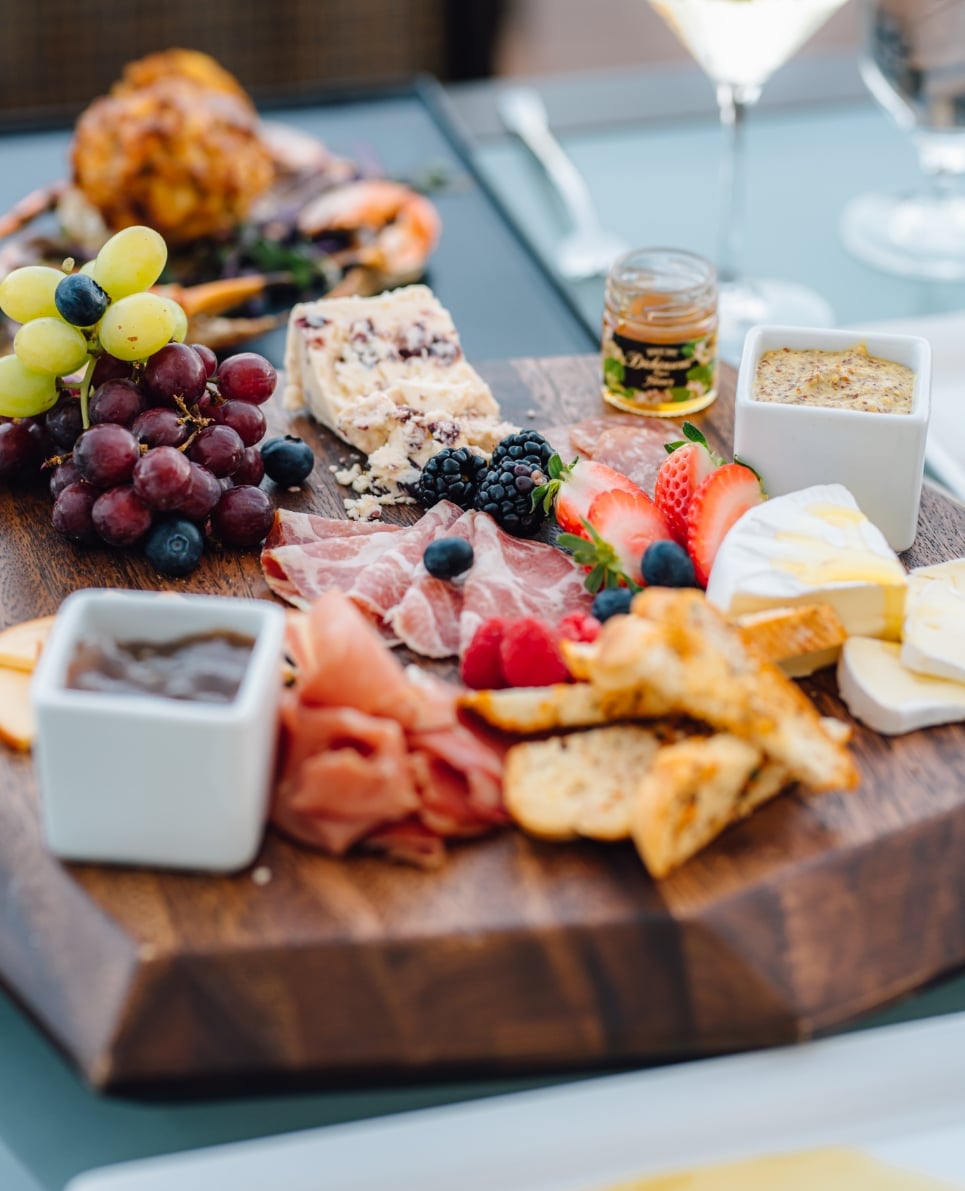In today’s interconnected world, knowing proper dining etiquette is more important than ever. Whether you’re attending a formal business dinner, a social gathering or a special occasion, understanding the rules of dining etiquette can help you navigate any table setting with confidence and grace.
This dining etiquette guide is designed to equip you with the essential knowledge and skills to make a positive impression and feel at ease in any dining situation. From table manners to the proper use of utensils, let’s explore the key principles of polished dining etiquette.
Dinner Table Etiquette Tips
Here are some essential dinner etiquette tips to help you navigate a formal or informal dining setting with poise and confidence:
- Napkin etiquette: Place your napkin on your lap as soon as you are seated. Use your napkin to gently blot your mouth rather than wipe it. When leaving the table temporarily, place your napkin neatly on your chair.
- Utensil usage: Start with the utensils farthest from your plate and work your way inward with each course. Use the knife to cut your food, then switch the fork to your right hand for eating. When finished eating, place your utensils diagonally across the plate, with the handles pointing down and to the right and the tips pointing up and to the left.
- Bread and butter: Break a small piece of bread, butter it on your dinner plate and eat it. Avoid buttering the entire bread slice at once. Tear and butter bread in smaller portions as you go rather than biting directly into a whole slice.
- Soup etiquette: Use the soup spoon to scoop soup away from you, then sip it from the side of the spoon. Avoid blowing on your soup to cool it down. Instead, wait for it to cool naturally or take small sips.
- Glassware and beverages: Use the appropriate glassware for each type of beverage served. Hold your glass by the stem or base rather than the bowl to avoid leaving fingerprints or warming the drink. Take small sips rather than gulping down your drink.
- Passing food and condiments: Pass dishes to the right in a counter-clockwise direction. When someone requests salt, pepper or another condiment, pass both the requested item and the one next to it.
- Conversation and electronic devices: Engage in pleasant conversation with your fellow diners, but avoid sensitive or controversial topics. Place your cell phone on silent or vibrate mode and avoid using it at the table unless it’s an emergency.
- Waitstaff interaction: Treat the waitstaff with respect and courtesy. Use “please” and “thank you” when making requests or expressing gratitude. If something is wrong with your meal, discreetly notify the waitstaff instead of making a scene.
How to Give the Perfect Toast
Giving a perfect toast involves careful preparation and delivery. Here are some steps to help you give a memorable and heartfelt toast:
- Plan ahead: Reflect on the purpose and tone of the event. Tailor your toast accordingly, whether it’s a wedding, birthday, retirement or other special occasion. Decide on the key points or messages you want to convey during your toast. Consider anecdotes, memories or qualities about the person or the occasion that you want to highlight.
- Keep it concise: Aim for a toast that lasts just a few minutes. Avoid rambling or going off on tangents and be mindful of the time and flow of the event. If there are multiple toasts scheduled, respect the time limits to ensure others have a chance to speak.
- Begin with a captivating opening: Start your toast with a strong and attention-grabbing opening line, such as a quote, a personal story or a heartfelt sentiment. Capture the audience’s attention and set the tone for your toast from the very beginning.
- Share personal anecdotes or stories: Include personal stories or anecdotes that are relevant to the occasion and showcase the qualities or accomplishments of the person being honored. Keep the stories light, positive and appropriate for the audience.
- Express gratitude and warmth: Show appreciation for the person or people you are toasting. Express your gratitude for their presence and the impact they have had on your life or the lives of others. Use sincere and heartfelt language to convey your emotions.
- Use humor when appropriate: Incorporate tasteful humor to add levity and entertainment to your toast. However, be mindful of the audience and the occasion, ensuring your jokes are appropriate and respectful.
- Raise your glass: Toward the end of your toast, raise your glass and propose a heartfelt, concise and meaningful toast to the person or people being celebrated. Encourage everyone to join in the toast and take a sip from their own glasses.
- Maintain eye contact and speak clearly: Look at the audience while speaking and make eye contact with different individuals. Speak clearly and project your voice, ensuring everyone can hear your words.
- Practice: Rehearse your toast beforehand to familiarize yourself with the flow and ensure your delivery is smooth. Practice in front of a mirror or with a trusted friend or family member for feedback.
The Importance of Etiquette for Dining
Dining etiquette plays a significant role in both personal and professional settings. Here are some key reasons highlighting the importance of dining etiquette:

- Making a positive impression: Proper dining etiquette showcases your respect, manners and consideration for others. It creates a favorable impression of you as a polite, cultured and well-mannered individual, which can be crucial in social and professional interactions.
- Professional advancement: In business settings, dining often serves as an opportunity for networking, negotiations and building professional relationships. By demonstrating polished dining etiquette, you project professionalism and enhance your credibility, which can contribute to career advancement and success.
- Enhancing social interactions: Good dining etiquette facilitates smoother and more enjoyable social interactions. It helps create a comfortable and pleasant atmosphere, allowing you and your fellow diners to focus on engaging in conversation and building meaningful connections.
- Respect for hosts and guests: Proper dining etiquette shows respect for your hosts, whether they are friends, family members or business associates. When you use proper dining etiquette, you can acknowledge their efforts in hosting the event and display your gratitude. Similarly, when you are a guest, observing dining etiquette reflects your appreciation for the hospitality extended to you.
- Effective communication: Dining etiquette encourages effective communication during a meal. It teaches you to listen attentively, engage in appropriate conversation and avoid topics that may be sensitive or controversial. These skills promote open and respectful dialogue, fostering stronger relationships and avoiding potential misunderstandings.
- Global awareness and cultural sensitivity: Understanding dining etiquette can help you navigate diverse cultural settings and customs when dining internationally or with people from different backgrounds. Respecting cultural norms shows your openness, adaptability and appreciation for diverse traditions.
- Personal confidence and comfort: Knowing the rules of dining etiquette boosts your confidence, allowing you to relax and enjoy dining experiences. When you feel at ease, you can focus on connecting with others rather than worrying about making mistakes or feeling self-conscious.
- Table manners and hygiene: Dining etiquette includes proper table manners, such as using utensils correctly, chewing with your mouth closed and using napkins appropriately. These practices promote good hygiene, minimize distractions and ensure a pleasant dining experience for everyone.
- Formal occasions and special events: Formal events, such as weddings, galas or official dinners, often adhere to specific dining protocols. Familiarity with dining etiquette ensures you can navigate these occasions with ease, demonstrating your respect for the event’s significance and maintaining the desired atmosphere.
- Passing on traditions: Observing dining etiquette is a way of preserving and passing on cultural traditions and customs to future generations. By practicing and teaching proper dining etiquette, we contribute to the preservation of social graces and traditions that enrich our lives.
Dine With Tallulah Crafted Food and Wine Bar
By familiarizing yourself with the etiquette of dining, you can navigate any dining experience with poise and confidence. Polished table manners both reflect your respect for others and enhance your personal and professional interactions.
Contact us to experience a private dining event at Tallulah Crafted Food and Wine Bar.




